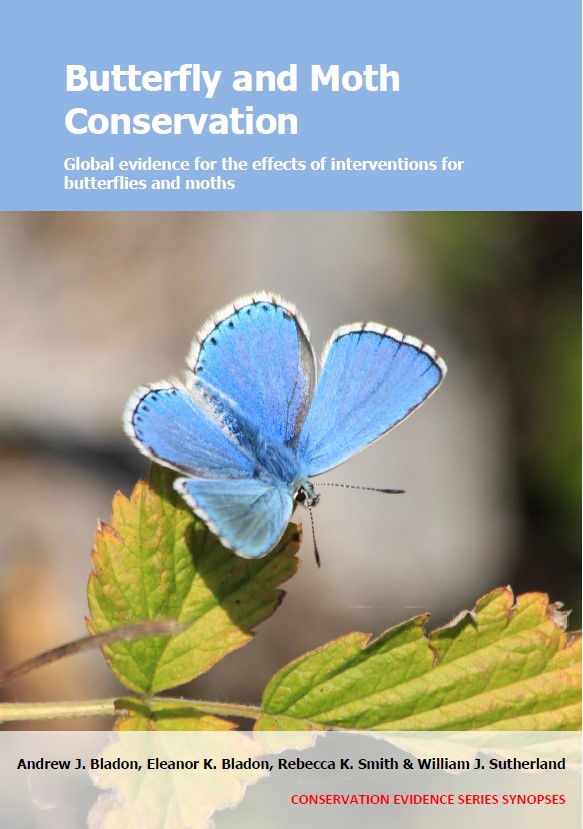Practise ‘wildlife gardening’
-
Overall effectiveness category Evidence not assessed
-
Number of studies: 4
View assessment score
Hide assessment score
How is the evidence assessed?
-
Effectiveness
not assessed -
Certainty
not assessed -
Harms
not assessed
Study locations
Supporting evidence from individual studies
A replicated study in 2000–2002 in 20 urban gardens in Sheffield, UK (Gaston et al. 2005) reported that caterpillars were only occasionally found on potted nettle Urtica dioica plants, and that increasing the number of plants or the age of the plants did not increase the number of caterpillars found. In the three years of the experiment, comma caterpillars Polygonia c-album, (it is unclear whether these were adults or caterpillars) were found on potted nettle plants in one, eight and four of the gardens respectively. In June 2000 one tub of nettles was placed in each of 20 gardens. To encourage new growth half of the stems were cut at the first visit and all at the end of each autumn. To test whether patch size or age of plant affected caterpillar presence, in April 2002 five gardens had their plant replaced with a new plant, five had their original plant, five had their plant replaced with four new plants, and five had their original plant plus three new plants. During the summer and autumn of 2000, 2001 and 2002 nettles were checked for caterpillars and their presence (feeding damage and webs).
Study and other actions testedA replicated, site comparison study in 2009–2011 in 3,722 private gardens in France (Muratet & Fontaine 2015) found that there was a higher abundance of butterflies in gardens where insecticides and herbicides were not used and where there were more natural features, but a lower abundance of butterflies where fungicides and snail pellets were not used. There were significantly more butterflies in gardens that used no pesticides (average: 7) than those with insecticide (average: 6) and herbicide (average: 7) use, but fewer butterflies in gardens that did not use conventional (average: 7) or Bordeaux mixture (average: 7) fungicides or snail pellets (average: 7). There was no difference in abundance between gardens that did and did not use fertilizer. Additionally, there were more butterflies in gardens which had more “natural” features, such as fallow plots, nettles, ivy, brambles and dead trees (data presented as model results). Data was obtained from a citizen monitoring scheme across France. Monthly from March–October participants submitted information about their gardens, including the number of butterflies seen, the presence of fallow plots, nettles, ivy, brambles and dead trees, and whether they use chemicals in gardening.
Study and other actions testedA site comparison study in 2013 in a rural garden in East Sussex, UK (Shackleton & Ratnieks 2016) found that of 11 planted flower varieties, buddleia Buddleia davidii and marjoram Origanum vulgare were visited most by butterflies and day-flying moths, and they attracted different groups of species. Marjoram received the most visits by butterflies (50% of all visits), followed by buddleia (22% of all visits), compared to 0–12% visits for the other nine flower varieties. Meadow brown Maniola jurtina (213 out of 287 visits) and gatekeeper Pyronia tithonus (908/961 visits) were most attracted to marjoram, and peacock Inachis io (312/328 visits), painted lady Vanessa cardui (123/143 visits) and red admiral Vanessa atalanta (9/10 visits) were most attracted to buddleia. However, hemp agrimony Eupatorium cannibinum attracted the highest diversity of butterfly species (data presented as model results). See paper for more details. Eleven varieties of ornamental flowers were grown in 1–5 discrete patches (total: 1–15 m2) around a garden. From 8–13th August 2013, butterflies and day-flying moths feeding on each patch were counted 105 times (three times/hour at 20-minute intervals) in good weather.
Study and other actions testedA replicated, paired, controlled study in 2013–2014 in a managed park in Georgia, USA (Majewska et al. 2018) found that areas with reduced weeding had a similar overall abundance and species richness of adult butterflies, and adults, eggs and caterpillars of four target species, compared to areas with regular weeding. The total abundance and species richness of butterflies was similar in plots weeded every two months and plots weeded every two weeks (data presented as model results). In addition, the abundance of adults, eggs and caterpillars of four target species (monarch Danaus plexippus, queen Danaus gilippus, gulf fritillary Agraulis vanillae, and black swallowtail Papilio polyxenes) were similar in plots with reduced weeding and plots with regular weeding (see paper for details). In spring 2013, four fenced, irrigated experimental plots (7.6 × 15.2 m, 20–88 m apart) were established in each of three blocks, 250 m apart. Each plot was planted with 128 plants of 13 species, and was surrounded by mown grass. Plots were assigned to four treatments/block: planting with native or non-native species, and low (every other month) or high (every other week) weed maintenance by hand pulling, trimming, and spot herbicide application. From May–September 2014, adult butterflies were surveyed for 7 minutes/plot, 1–4 times/month, and eggs and caterpillars of four species (monarch, queen, black swallowtail, gulf fritillary) were counted weekly or monthly on 2–14 host plants/butterfly species/plot.
Study and other actions tested
Where has this evidence come from?
List of journals searched by synopsis
All the journals searched for all synopses
This Action forms part of the Action Synopsis:
Butterfly and Moth Conservation
Butterfly and Moth Conservation - Published 2023
Butterfly and Moth Synopsis





)_2023.JPG)














